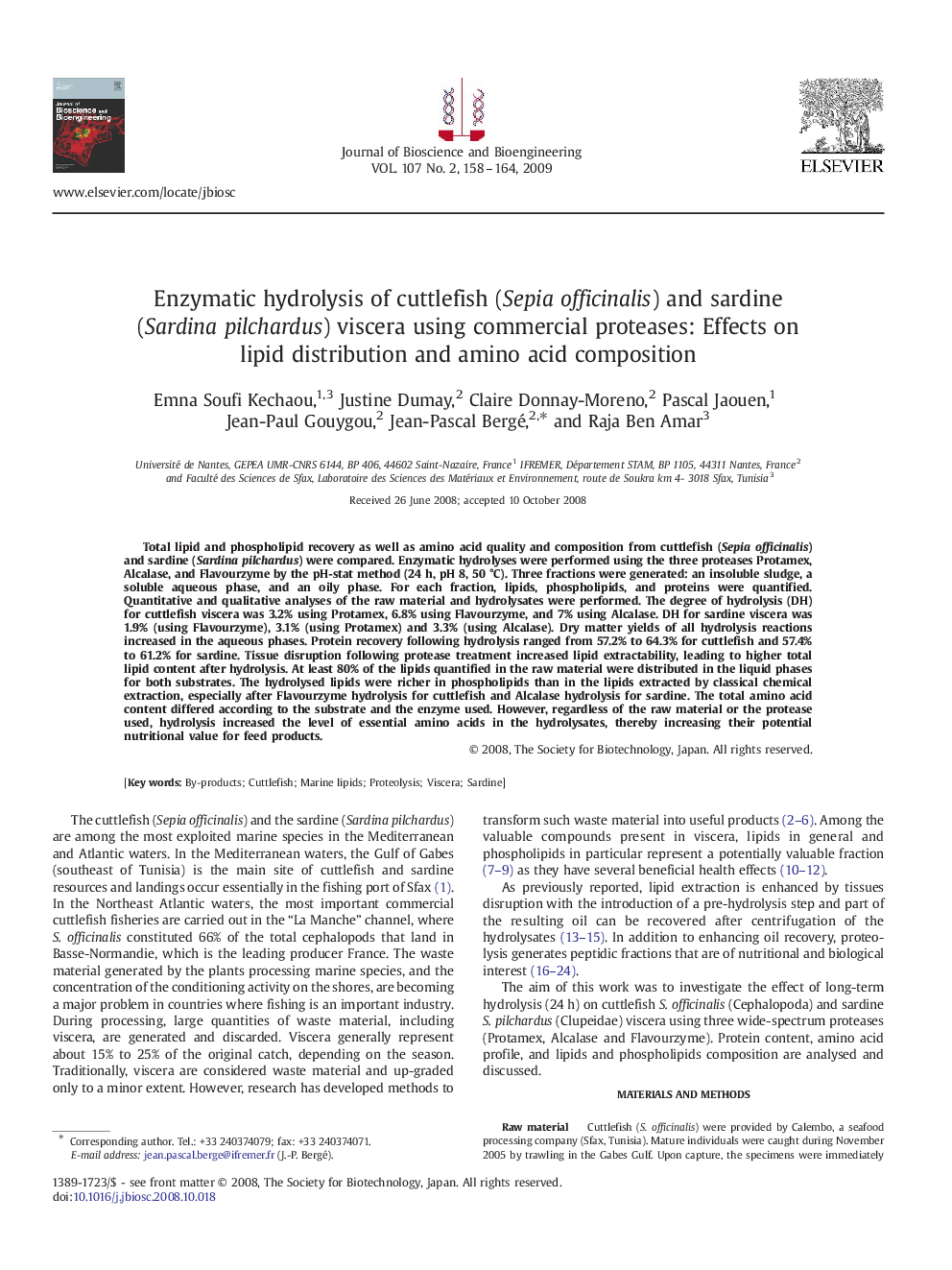| کد مقاله | کد نشریه | سال انتشار | مقاله انگلیسی | نسخه تمام متن |
|---|---|---|---|---|
| 21423 | 43221 | 2009 | 7 صفحه PDF | دانلود رایگان |

Total lipid and phospholipid recovery as well as amino acid quality and composition from cuttlefish (Sepia officinalis) and sardine (Sardina pilchardus) were compared. Enzymatic hydrolyses were performed using the three proteases Protamex, Alcalase, and Flavourzyme by the pH-stat method (24 h, pH 8, 50 °C). Three fractions were generated: an insoluble sludge, a soluble aqueous phase, and an oily phase. For each fraction, lipids, phospholipids, and proteins were quantified. Quantitative and qualitative analyses of the raw material and hydrolysates were performed. The degree of hydrolysis (DH) for cuttlefish viscera was 3.2% using Protamex, 6.8% using Flavourzyme, and 7% using Alcalase. DH for sardine viscera was 1.9% (using Flavourzyme), 3.1% (using Protamex) and 3.3% (using Alcalase). Dry matter yields of all hydrolysis reactions increased in the aqueous phases. Protein recovery following hydrolysis ranged from 57.2% to 64.3% for cuttlefish and 57.4% to 61.2% for sardine. Tissue disruption following protease treatment increased lipid extractability, leading to higher total lipid content after hydrolysis. At least 80% of the lipids quantified in the raw material were distributed in the liquid phases for both substrates. The hydrolysed lipids were richer in phospholipids than in the lipids extracted by classical chemical extraction, especially after Flavourzyme hydrolysis for cuttlefish and Alcalase hydrolysis for sardine. The total amino acid content differed according to the substrate and the enzyme used. However, regardless of the raw material or the protease used, hydrolysis increased the level of essential amino acids in the hydrolysates, thereby increasing their potential nutritional value for feed products.
Journal: Journal of Bioscience and Bioengineering - Volume 107, Issue 2, February 2009, Pages 158–164